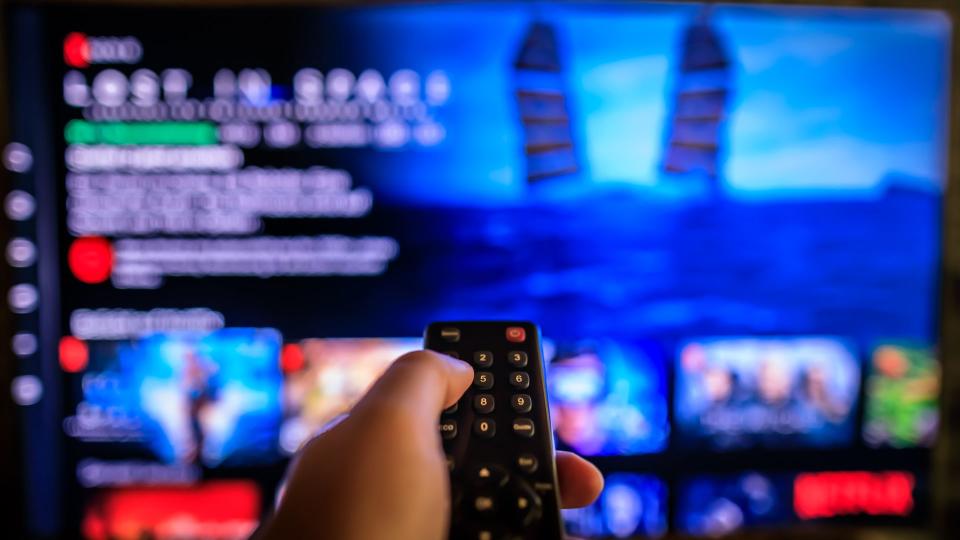The Average Consumer Pays Nearly $1,000 a Year for Subscriptions — What Do You Pay?

When streaming services first arrived, they seemed like they could offer much more affordable entertainment than what cable TV packages were offering. Instead of paying one large bill for dozens or even hundreds of channels you never use, you could instead pay a few small fees for services you love.
For You: 11 Free TV Apps That’ll Let You Cut the Cable
Find Out: How To Get $340 Per Year in Cash Back on Gas and Other Things You Already Buy
While streaming can still be cheaper than cable, the current entertainment landscape isn’t necessarily as consumer-friendly as some may have thought it would be.
Sponsored: Owe the IRS $10K or more? Schedule a FREE consultation to see if you qualify for tax relief.
The Cost of Subscriptions
The huge rise in the number of streaming services has created a dynamic where you need multiple subscriptions to watch the content you want, and that can quickly add up. Plus, streaming prices have been on the rise, and the advent of ad-supported plans — albeit a cheaper option — is making streaming start to resemble the cable TV of old.
Besides TV shows and movies, add in subscriptions for other areas, like exercise, cooking and education, and it’s easy to see how consumers can get fed up. Altogether, the average American has 4.5 subscriptions and pays an average of $924 per year, with streaming being the most popular type of subscription, according to research from Bango.
“Subscription fatigue has been a reality for some time now,” said Dan Goman, CEO and founder of Ateliere Creative Technologies. He pointed to a Deloitte survey showing that almost half of consumers think they’re paying too much for streaming.
And if you add up the cost of all-inclusive premium plans to five of the most popular streaming services, including one that offers a live TV option, the cost is around $150 per month, he noted, which is more than the $112.70 monthly average for pay-TV alone, according to Leichtman Research Group.
Explore More: Top 15 Free Movie Apps: Your Ticket to Entertainment
Cable 2.0?
Of course, streaming doesn’t have to be so expensive, as you have more control over what you pay for, compared with cable. It’s possible that a streaming service with a live TV option, such as Hulu + Live TV — or a standalone live TV streaming service like Sling TV and a separate subscription for a service like Netflix — is still cheaper than cable TV. Or, you could just do a couple streaming services without live TV for more savings.
“Cable TV is effectively dead; consumers that have transitioned from cable to streaming will never go back due to its inherent drawbacks, including high cost and lack of choice,” said Goman. “Despite the costs and potential ads, consumers appreciate the flexibility, diversity and on-demand nature of streaming services.”
Bundling Subscriptions
Plus, consumers are now starting to see more options to construct a bundle of subscriptions that fit what they’re looking for and potentially save money. You might even have access to free or discounted subscriptions through other things you’re currently paying for, like certain credit card memberships or cell phone plans. Indeed, the Bango research found that 34% of consumers have a subscription via another service they pay for.
“The good news is that there are a lot of good options available. While streaming services have increased costs, they have also expanded access levels and introduced smaller bundle packages for savings. Companies such as Netflix have thoughtfully integrated advertisements without excessive intrusion onto the customer,” said Goman.
“Consequently, more and more consumers are discontinuing subscriptions in favor of exploring ad-supported alternatives and bundles that offer added value,” he added.
The Bango research also found that 69% of consumers want to choose their own bundles rather than buy a prepackaged cable-TV type offering. And nearly three-quarters want to manage all of their subscriptions from one hub, with telecom providers being the most popular choice regarding who consumers think should manage this hub.
The Drawbacks of Bundling
However, there’s a risk that the future of bundling could lead to many of the same downsides of cable.
“Streaming services will continue to increase the unsustainably low subscription prices, and we’re already at a point where subscriptions to the top streaming services cost more than the average cable bill,” said Goman. “This leads us to ‘Cable 2.0,’ where platforms like Apple and YouTube will bundle content and be the next ‘cable companies’ offering cost-effective content bundles for consumers.”
While this could be more convenient than the current subscription model, not everyone will like this approach.
“This is not good news for consumers that have grown accustomed to the freedom of choice in content consumption. The bundle — in its mature form — inevitably reduces choice and access to only the content we love most,” said Goman. “While we are still in the early stages of the reinvention, it’s rapidly becoming clear where this is headed: the bloated bundle with a handful of the channels you actually want to watch and 300 channels you care nothing about.”
More From GOBankingRates
This article originally appeared on GOBankingRates.com: The Average Consumer Pays Nearly $1,000 a Year for Subscriptions — What Do You Pay?
